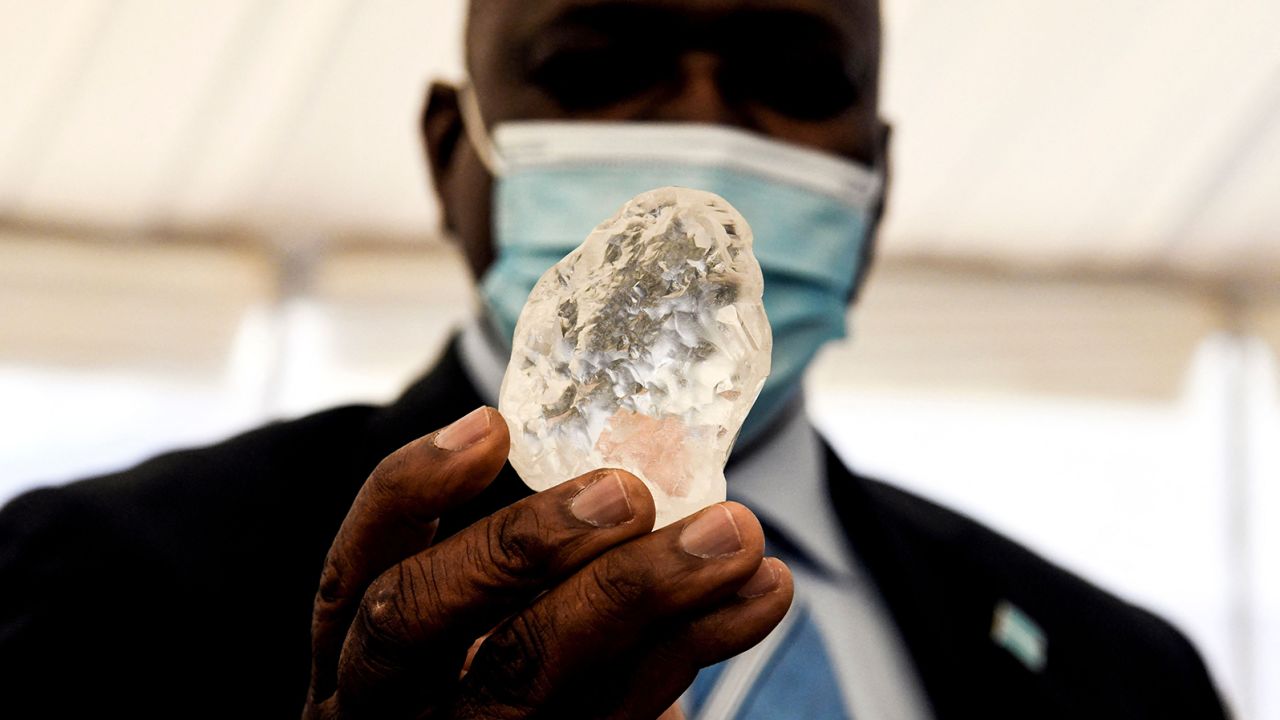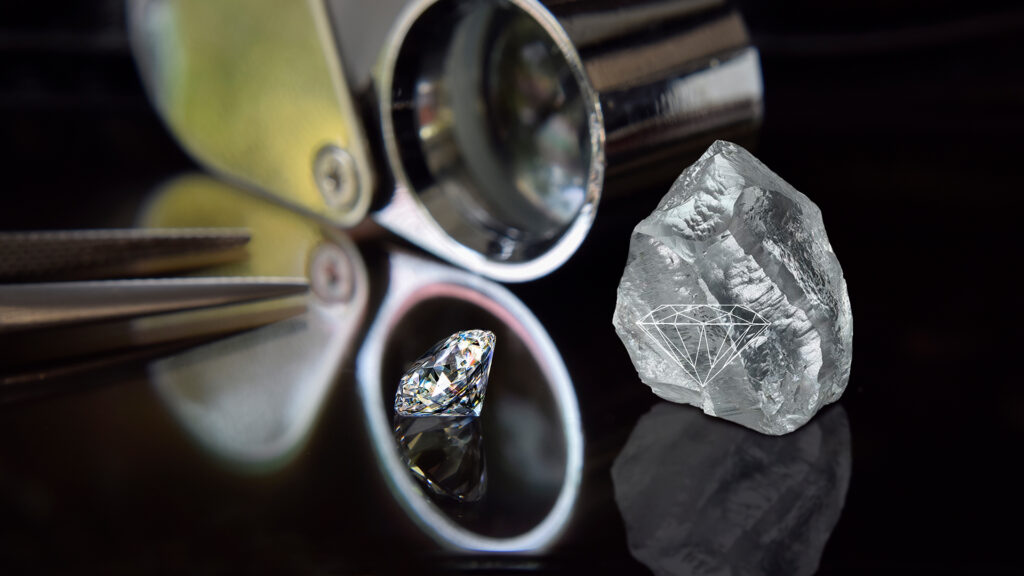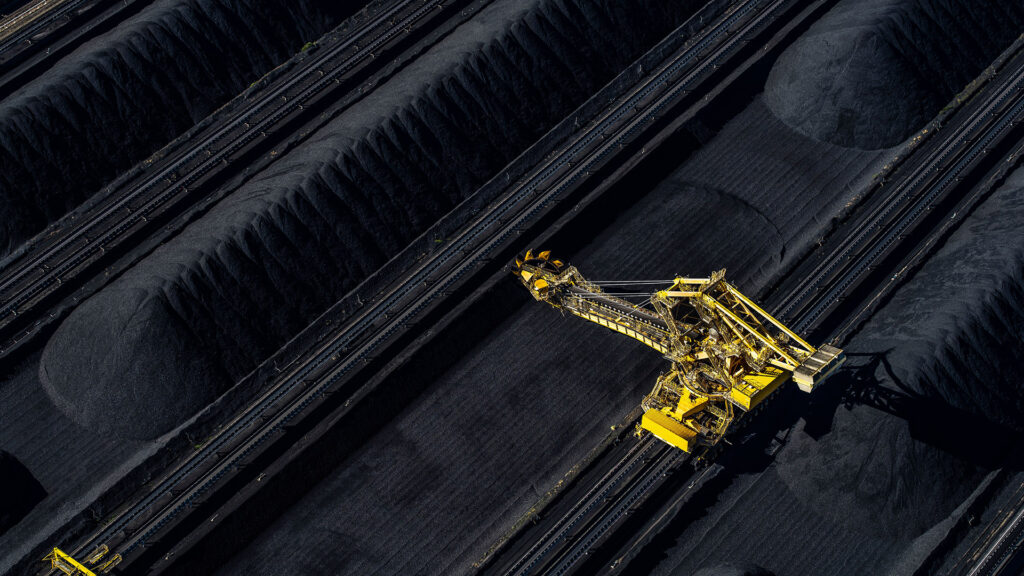Botswana’s journey from a modest economy to one of the world’s leading diamond producers is an inspiring tale of discovery, resilience, and strategic vision. This small, landlocked country has become a global diamond powerhouse thanks to a combination of persistence, innovative thinking, and strategic partnerships.
Let’s dive into the fascinating history of diamonds in Botswana, from their discovery to their profound impact on the nation’s development.
History of Diamonds in Botswana: Early Exploration and the Hunt
The history of diamond exploration in Botswana began in the mid-20th century. In 1954, De Beers, a leading diamond company, began prospecting for diamonds in the Bechuanaland Protectorate (now Botswana). At that time, Botswana was largely an untapped territory in terms of mineral resources, and De Beers was determined to uncover its hidden treasures.
A pivotal figure in this early exploration phase was geologist Gavin Lamont, who joined Kimberlitic Searches, the local De Beers mining company subsidiary, in 1955. Lamont’s exploration efforts focused initially on the Tuli Block along the Limpopo River. Before De Beers began its work, no systematic diamond prospecting had been conducted in Botswana, making this a true pioneering venture.
One of the first breakthroughs came from Central African Selection Trust (CAST) in 1959, which found three small diamonds near Foley Siding along the Motloutse River. CAST believed these diamonds were the result of eroded Karoo conglomerates, and they soon relinquished the exploration rights.
De Beers seized the opportunity and expanded its exploration into the Bamangwato tribal territory in 1962, ultimately confirming CAST’s findings and discovering additional diamonds and kimberlitic garnets.
The Landmark Discoveries in the Diamond Industry
In 1966, De Beers’ exploration bore fruit when they discovered two “kimberlites” near Mochudi in the Kgatleng District. Although these weren’t true kimberlites but rather lamprophyres, they provided crucial evidence that the sampling techniques were effective. This marked a turning point in Botswana’s diamond story.
Soon after, Lamont and his team began exploring areas with thinner Kalahari sand cover, notably around Letlhakane, south of the Makgadikgadi Pan. In March 1967, geologist Manfred Marx discovered Botswana’s first true kimberlite—BK1, followed by the massive Orapa pipe (AK1) in April of the same year. The Orapa pipe turned out to be a massive deposit, marking Botswana’s first major diamond find.
In June 1969, the Letlhakane pipe was discovered, followed by other significant kimberlites, including Karowe (AK6) and several others that would eventually be part of the Damtshaa Mine. This period of discovery culminated in 1972 with the identification of the Jwaneng pipe—now the world’s richest diamond mine by value.
The Discovery of Diamond Deposits
The discovery of diamond deposits in Botswana is a tale of perseverance and serendipity. De Beers had been exploring the country since 1938, but it wasn’t until 1966 that the first kimberlite pipe was unearthed in the Mochudi area. Led by the tenacious Dr. Gavin Lamont, the team had been on the brink of abandoning their search after more than a decade of fruitless efforts. However, Lamont’s unwavering determination paid off spectacularly with the discovery of diamonds at Orapa in 1967, marking the dawn of Botswana’s diamond mining industry.
The Orapa diamond mine, which commenced operations in 1972, quickly established itself as one of the largest and most productive diamond mines globally. This monumental discovery was a game-changer for Botswana, injecting much-needed revenue into the economy and setting the stage for the country’s transformation.
Today, Botswana stands as one of the world’s leading diamond producers, with the diamond industry playing a pivotal role in its economic landscape. The discovery of diamond deposits has not only brought prosperity but also shaped the nation’s development trajectory, leaving an indelible mark on its history and future.
Formation of Debswana Diamond Company and Economic Impact
Recognizing the potential of these discoveries, the Botswana government partnered with De Beers to form Debswana Diamond Company Limited in 1969. This 50-50 joint venture became pivotal in managing and operating the country’s diamond mines, ensuring that Botswana’s diamond wealth would benefit its people.
In addition to Debswana, the Diamond Trading Company Botswana (DTCB) has played a crucial role in the economic development of the country, particularly after moving its operations from London to Gaborone.
Diamonds quickly became the foundation of Botswana’s economic transformation. Revenue from the diamond industry has been used to develop essential infrastructure, healthcare, and education. Diamonds now account for roughly one-third of the country’s GDP and over 80% of its export earnings. Unlike many other resource-rich nations, Botswana’s careful management of its diamond wealth has allowed it to maintain political stability and achieve sustained economic growth.
The Challenge of Sustainability
However, the diamond industry in Botswana is not without challenges. As reserves begin to deplete, Botswana is increasingly looking at ways to sustain the industry through technological innovation and diversification. In recent years, De Beers moved its rough diamond trading operations from London to Gaborone, significantly boosting diamond sales and establishing Botswana as a global center for diamond trading and adding significant value to the country’s role in the industry.
The government has also focused on developing other sectors of the economy, including tourism, agriculture, and financial services, to ensure that Botswana is not overly reliant on its diamond resources.
Environmental and Social Impact
The diamond mining industry in Botswana has had profound environmental and social impacts. The extraction process, while economically beneficial, poses significant environmental challenges, including deforestation, water pollution, and soil erosion. Recognizing these issues, the Botswana government and mining companies have implemented measures to mitigate the environmental footprint of diamond mining.
Debswana Diamond Company, a joint venture between the Botswana government and De Beers, has been at the forefront of these efforts. The company has adopted renewable energy sources, such as solar power, and established comprehensive water management systems to reduce its environmental impact. These initiatives reflect a commitment to sustainable mining practices that balance economic benefits with environmental stewardship.
On the social front, the diamond mining industry has been a double-edged sword. While it has created jobs and spurred economic growth, it has also brought challenges to local communities. The Botswana government and mining companies have responded by launching programs aimed at supporting local communities and promoting economic diversification. These initiatives are designed to ensure that the benefits of diamond mining are widely shared and that the industry contributes to long-term, inclusive development.
Overall, the diamond mining industry in Botswana has been a catalyst for economic growth and development. However, as the industry evolves, addressing the environmental and social impacts of diamond mining remains a critical concern. The ongoing efforts to promote sustainability and community well-being will be essential in ensuring that the diamond industry continues to benefit Botswana and its people.
Major Diamond Mines and Their Impact
Botswana’s diamond industry is centered around several key mines, with Botswana diamonds playing a significant role in the country’s economic development through their partnership with De Beers Mining Company:
- Orapa Mine – The first major diamond discovery, Orapa is one of the largest diamond mines in the world.
- Jwaneng Mine – Discovered in 1972, this mine is known for producing some of the highest-value diamonds globally and is crucial to Botswana’s economy.
- Letlhakane and Karowe Mines – These mines also contribute significantly to the country’s production.
- Ghaghoo Mine – Located in the Central Kalahari, this mine was discovered later but adds to Botswana’s rich mining portfolio.
The Future of Botswana Diamonds
Botswana has produced over 665 million carats of diamonds since mining began in 1971. Today, the country produces around 28.8 million carats annually, making it one of the world’s leading diamond producers. Despite the challenges, Botswana’s diamond industry remains vital, and the government is committed to maximizing its benefits while also preparing for a future beyond diamonds.
As a landlocked country surrounded by neighbouring South Africa, Botswana faces unique geographical and economic challenges in its diamond industry.
In addition to its mining operations, Botswana has focused on adding value locally by encouraging cutting and polishing activities within the country. This strategy is aimed at creating more jobs and ensuring that more of the value derived from diamonds stays within Botswana.
Frequently Asked Questions
1. When were diamonds first discovered in Botswana?
Diamonds were first discovered in Botswana in 1967, with the discovery of the Orapa pipe by De Beers.
2. Who discovered the first diamond in Botswana?
The first diamond discoveries were led by Gavin Lamont and his team from De Beers, including geologist Manfred Marx, who discovered the first true kimberlite in Botswana.
3. What role does Debswana play in Botswana’s diamond industry?
Debswana is a 50-50 joint venture between the Botswana government and De Beers. It manages and operates the country’s diamond mines, ensuring that diamond revenue benefits both the government and De Beers.
4. What is the role of the Diamond Trading Company Botswana (DTCB) in the diamond industry?
The DTCB plays a vital role in sorting, valuing, and selling diamonds, significantly contributing to Botswana’s GDP and job creation. The partnership with De Beers moved operations from London to Gaborone, establishing the DTCB as a significant player in the industry.
5. How significant are diamonds to Botswana’s economy?
Diamonds are extremely significant, contributing about one-third of Botswana’s GDP and over 80% of its export earnings. The revenue from diamonds has been used for national development, including healthcare, education, and infrastructure.
6. What are the biggest diamond mines in Botswana?
The biggest diamond mines in Botswana include the Orapa Mine, Jwaneng Mine, Letlhakane Mine, and Karowe Mine. Jwaneng is known as the richest diamond mine by value.
7. What challenges does Botswana face in the diamond industry?
Challenges include the depletion of existing diamond reserves, competition from synthetic diamonds, and the need to diversify the economy to reduce reliance on diamond mining.
8. What is the future of diamonds in Botswana?
Botswana is focusing on maximizing the value of its existing diamond resources while promoting local beneficiation through cutting and polishing activities. The country is also diversifying its economy to ensure long-term sustainability beyond diamond mining.



